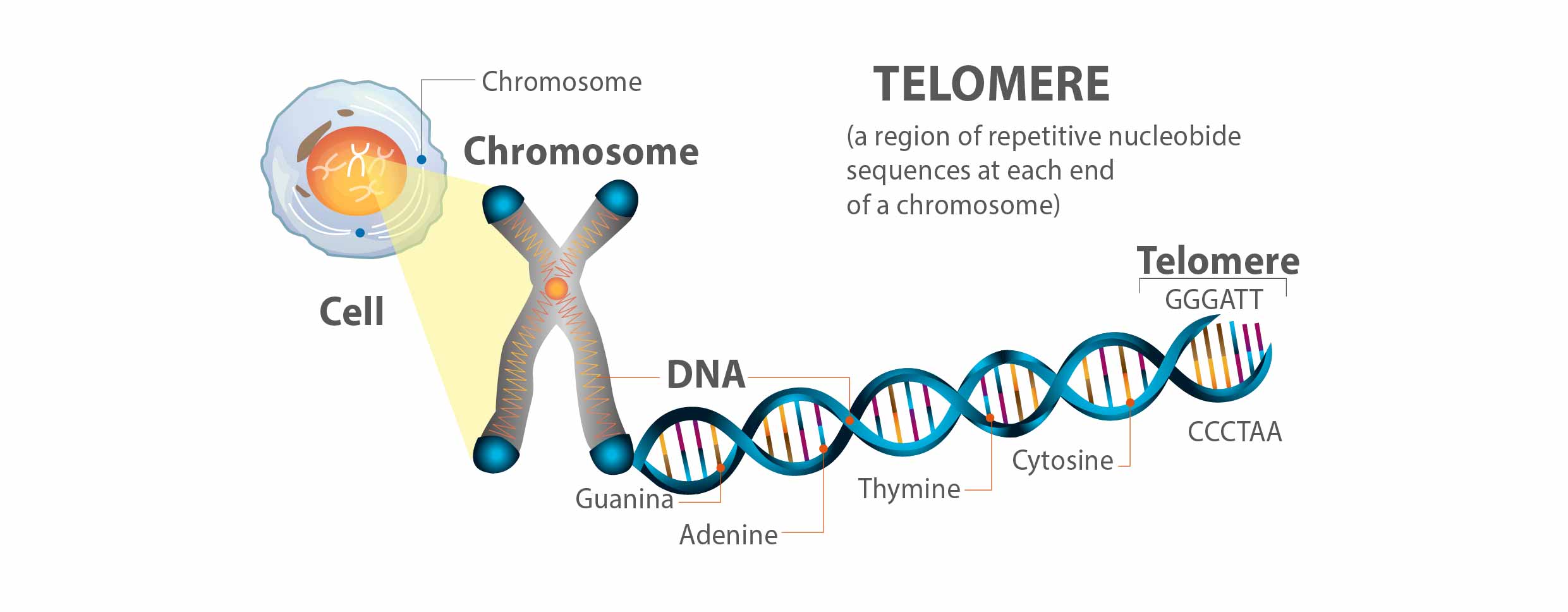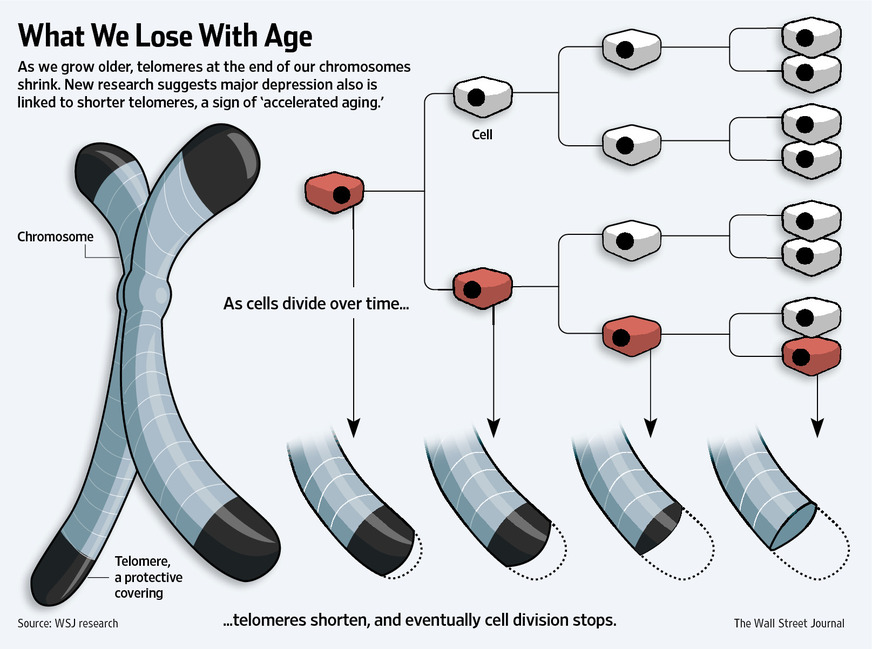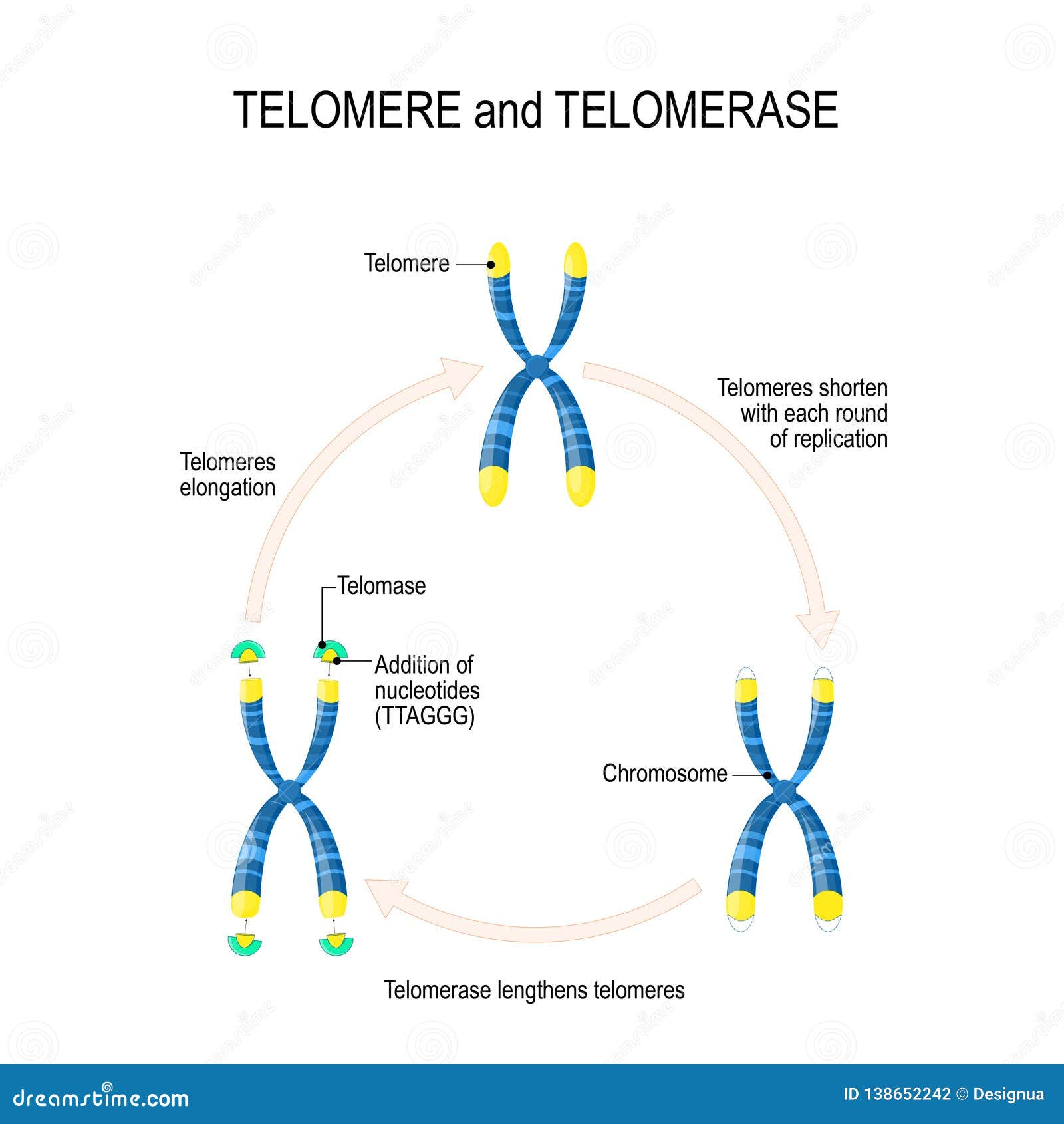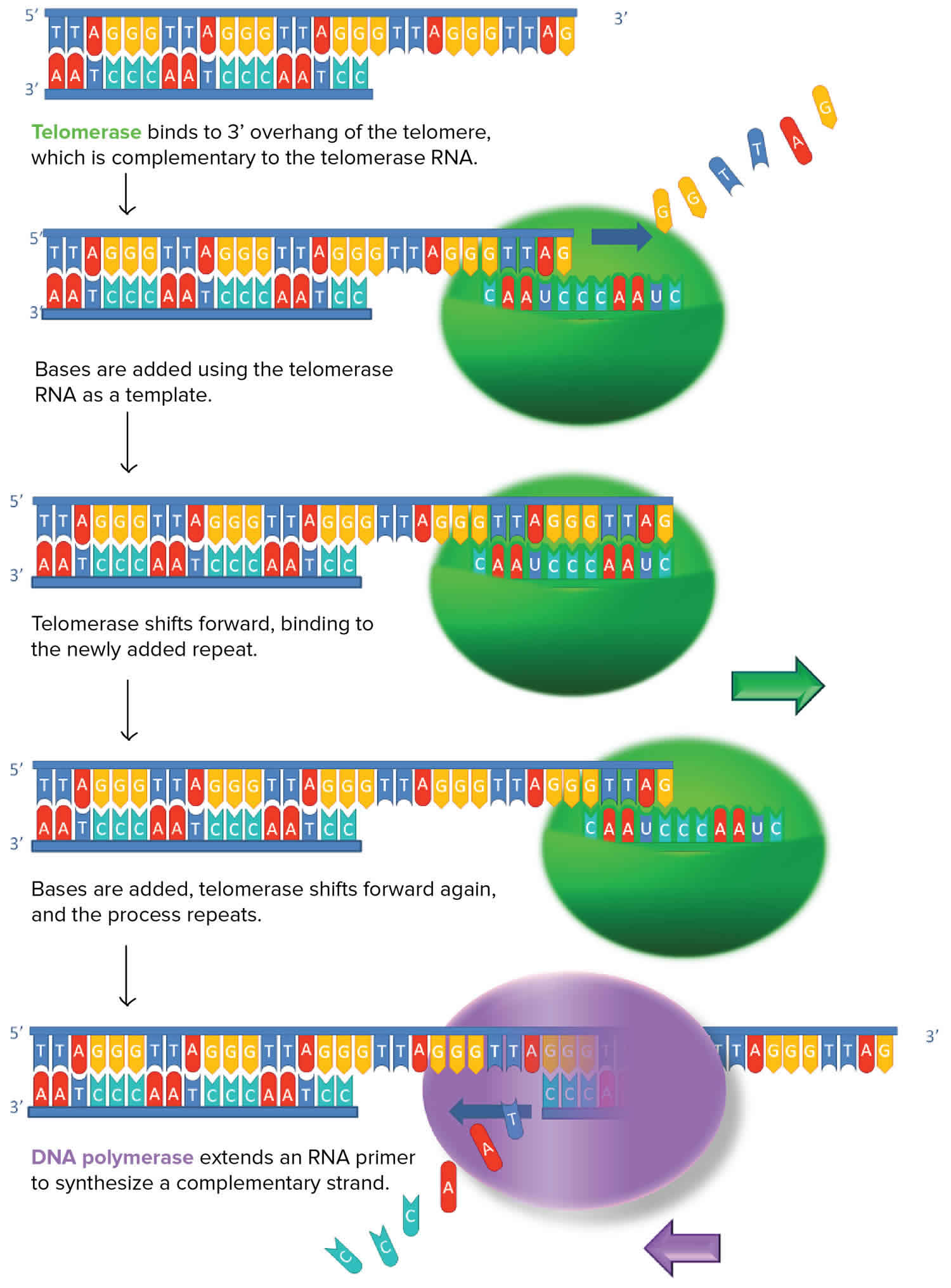🧬 Telomeres and Longevity: Understanding the Cellular Clock
In the quest to understand aging and longevity, telomeres have emerged as a significant piece of the puzzle. These protective caps at the ends of our chromosomes play a crucial role in cellular health and lifespan.
What Are Telomeres?
Telomeres are repetitive DNA sequences located at the ends of chromosomes. They act like the plastic tips of shoelaces, preventing chromosomes from fraying or sticking to each other. Each time a cell divides, its telomeres shorten slightly. When telomeres become too short, the cell can no longer divide and becomes senescent or dies. 
Telomeres and Aging
The shortening of telomeres is associated with aging and the onset of age-related diseases. Research has shown that individuals with longer telomeres tend to have longer lifespans and a lower risk of chronic diseases. Conversely, shorter telomeres are linked to increased risks of cardiovascular disease, diabetes, and certain cancers.

Factors Influencing Telomere Length
Several factors can influence the rate at which telomeres shorten:
- Genetics: Inherited factors play a role in determining baseline telomere length.
- Lifestyle: Chronic stress, poor diet, lack of exercise, and smoking can accelerate telomere shortening. Conversely, healthy lifestyle choices may slow this process.
- Environmental Exposures: Exposure to pollutants and toxins can contribute to oxidative stress, leading to faster telomere attrition.
Telomerase: The Telomere-Extending Enzyme
Telomerase is an enzyme that adds DNA sequences to the ends of telomeres, effectively lengthening them. While most somatic cells have low telomerase activity, certain cells like stem cells and germ cells exhibit higher activity levels. Research is ongoing to explore ways to safely activate telomerase in somatic cells to combat aging. 

Implications for Breeding and Longevity
Understanding telomere dynamics can be valuable for breeders aiming to promote longevity and health in their lines. While direct measurement of telomere length in animals is still a developing field, selecting for traits associated with longevity and robust health may indirectly favor individuals with more favorable telomere biology.
So the question arises, can we use this information to create longer living offspring? Some studies in humans and animals show that sperm from older males may have slightly longer telomeres, because sperm-producing stem cells activate telomerase (the enzyme that can lengthen telomeres). So technically, yes, older studs might pass on longer telomeres. This phenomenon, observed in humans and other species, suggests a positive correlation between the sire’s telomere length and the offspring’s longevity. While longer telomeres are not the sole predictor of health or lifespan, this emerging science highlights the importance of considering paternal age and telomere dynamics when evaluating breeding decisions. But here’s the catch—this doesn’t always mean the puppies will live longer. Other factors, like accumulated mutations in aging sperm or overall genetic health, could offset any telomere advantage.
🧬 Does longevity run in the line?
Absolutely. This is one of the strongest indicators. Dogs from long-lived lines—especially when both sides of the pedigree show solid health into the teens—are more likely to pass on those genes. Longevity is polygenic (influenced by many genes) and often tied to low incidence of disease, good immune function, sound structure, and yes—healthy telomere maintenance.
Longevity tends to follow family lines, not just age of the sire.
Telomere length plays a role but isn’t the whole story.
Good breeding decisions should weigh structure, temperament, pedigree health, and line longevity over any single marker.
Summary
Telomeres serve as a biological clock, influencing how cells age and function. By understanding the factors that affect telomere length, we can make informed decisions to promote health and longevity, both in ourselves and in the animals we care for.
🧬 A Note on Cloning and Telomeres
Cloning, particularly somatic cell nuclear transfer (SCNT), involves using a donor cell from an adult organism. One of the challenges in cloning is that the donor cell’s telomeres may already be shortened due to age or cellular replication. This can lead to prematurely aged clones with reduced lifespans and increased susceptibility to age-related diseases.
For example, the famous cloned sheep Dolly was created using a mammary gland cell from a six-year-old ewe. Researchers later found that Dolly’s telomeres were significantly shorter than those of naturally born sheep of the same age, possibly contributing to her early health problems and death.
Not all clones exhibit telomere shortening—some studies have shown telomerase activity can be reactivated during cloning, partially resetting the telomere length. However, the inconsistency underscores how telomere biology remains a crucial consideration in cloning and regenerative biology.
📚 References
1. Shekhidem, H. A., Sharvit, L., Leman, E., Manov, I., & Roichman, A. (2019). Telomeres and Longevity: A Cause or an Effect? International Journal of Molecular Sciences.
This study explores the complex relationship between telomere length and lifespan, discussing whether telomere shortening is a cause or consequence of aging.
2. Vaiserman, A., & Krasnienkov, D. (2021). Telomere Length as a Marker of Biological Age: State-of-the-Art, Open Issues, and Future Perspectives. Frontiers in Genetics.
This paper reviews the current understanding of telomere length as a biomarker for biological aging and its potential applications.
3. Shammas, M. A. (2011). Telomeres, lifestyle, cancer, and aging. Current Opinion in Clinical Nutrition and Metabolic Care.
This article discusses how lifestyle factors influence telomere length and the implications for aging and cancer.
4. Lansdorp, P. M. (2022). Telomeres, aging, and cancer: the big picture. Blood.
This publication provides an overview of telomere biology and its significance in aging and cancer development.
5. Chen, L.-Y., Redon, S., & Lingner, J. (2012). The human CST complex is a terminator of telomerase activity. Nature.
This study identifies the CST complex as a regulator of telomerase activity, contributing to telomere length homeostasis.
6. Benetos, A., Fritsch, C., Horton, E., Lenotre, L., Toupance, S., & Villemonais, D. (2024). Stochastic branching models for the telomeres dynamics in a model including telomerase activity. arXiv.
This research presents mathematical models to understand telomere dynamics and the role of telomerase in cellular aging.
7. EatingWell Editors. (2021). How Food Can Help You Look and Feel More Youthful—Here’s What the Science Says. EatingWell.
This article summarizes research on how diet and lifestyle choices can influence telomere length and aging.
8. Sifferlin, A. (2017). Exercise Makes You Younger at the Cellular Level. TIME.
This piece reports on studies linking regular physical activity to longer telomeres and reduced biological aging.
9. Keim, B. (2009). Nobel Winners Isolate Protein Behind Immortality, Cancer. WIRED.
This article discusses the Nobel Prize-winning discovery of telomerase and its implications for aging and cancer.
10. Kimura, M., Cherkas, L. F., Kato, B. S., Demissie, S., Hjelmborg, J. V. B., Brimacombe, M., Hunkin, J. L., Gardner, J. P., Lu, X., Cao, X., Sastrasinh, M., Province, M. A., Hunt, S. C., Christensen, K., Levy, D., Spector, T. D., & Aviv, A. (2008). Offspring’s leukocyte telomere length, paternal age, and telomere elongation in sperm. PLoS Genetics.
This study shows that older paternal age is associated with longer telomeres in sperm, which are passed on to offspring, potentially affecting their longevity.
11. Eisenberg, D. T. A., Hayes, M. G., & Kuzawa, C. W. (2012). Delayed paternal age of reproduction in humans is associated with longer telomeres across two generations of descendants. Proceedings of the National Academy of Sciences.
This paper reports that the lengthening of telomeres in sperm with paternal age can have intergenerational effects, influencing the telomere length of children and even grandchildren.
12. Aviv, A., Hunt, S. C., Lin, J., Cao, X., Kimura, M., & Blackburn, E. H. (2011). Leukocyte telomere length and the father’s age enigma: implications for male-driven evolution of telomere length in humans. Molecular Human Reproduction.
This article explores the biological mechanisms behind increased telomere length in the sperm of older fathers and its evolutionary implications.
Recent Comments